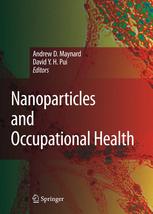

Most ebook files are in PDF format, so you can easily read them using various software such as Foxit Reader or directly on the Google Chrome browser.
Some ebook files are released by publishers in other formats such as .awz, .mobi, .epub, .fb2, etc. You may need to install specific software to read these formats on mobile/PC, such as Calibre.
Please read the tutorial at this link: https://ebookbell.com/faq
We offer FREE conversion to the popular formats you request; however, this may take some time. Therefore, right after payment, please email us, and we will try to provide the service as quickly as possible.
For some exceptional file formats or broken links (if any), please refrain from opening any disputes. Instead, email us first, and we will try to assist within a maximum of 6 hours.
EbookBell Team

4.7
46 reviewsNanotechnology is rapidly invading many aspects of modern society - from science, research and engineering to industrial and commercial applications and, inevitably, to man and his environment. One of the biggest challenges, therefore, is managing environmental, health and safety risks of nanomaterials. Yet, the information necessary to assess their longterm effects is scarce. Systematic research into what potentially makes engineered nanomaterials hazardous, how this translates into risk, and how these can be managed will be vital and involves interdisciplinary collaboration.
The first International Symposium on Nanotechnology and Occupational Health, in 2004, brought together hygienists, manufacturers, toxicologists, materials scientists, regulators and researchers. It pointed the way to what needs to be done. The second International Symposium, 2005, Minneapolis, Minnesota, demonstrated the power and potential where there is a will: with nearly three times as many attendants, and with contributions from academics, industry, policymakers, non-government organizations and even lawyers, this second symposum established that, while there is international concern over how to ensure safe nanotech-workplaces, there is also progress being made in developing the required knowledge.
This volume, a reprint from a special issue of the Journal of Nanoparticle Research, mainly draws from work presented at the 2005 symposium, diverse but united by the need for a holistic view of nanotechnology and risk.
Audience:
Libraries, laboratories, scientists and researchers, policymakers, international associations and initiatives involved in nanotechnology.